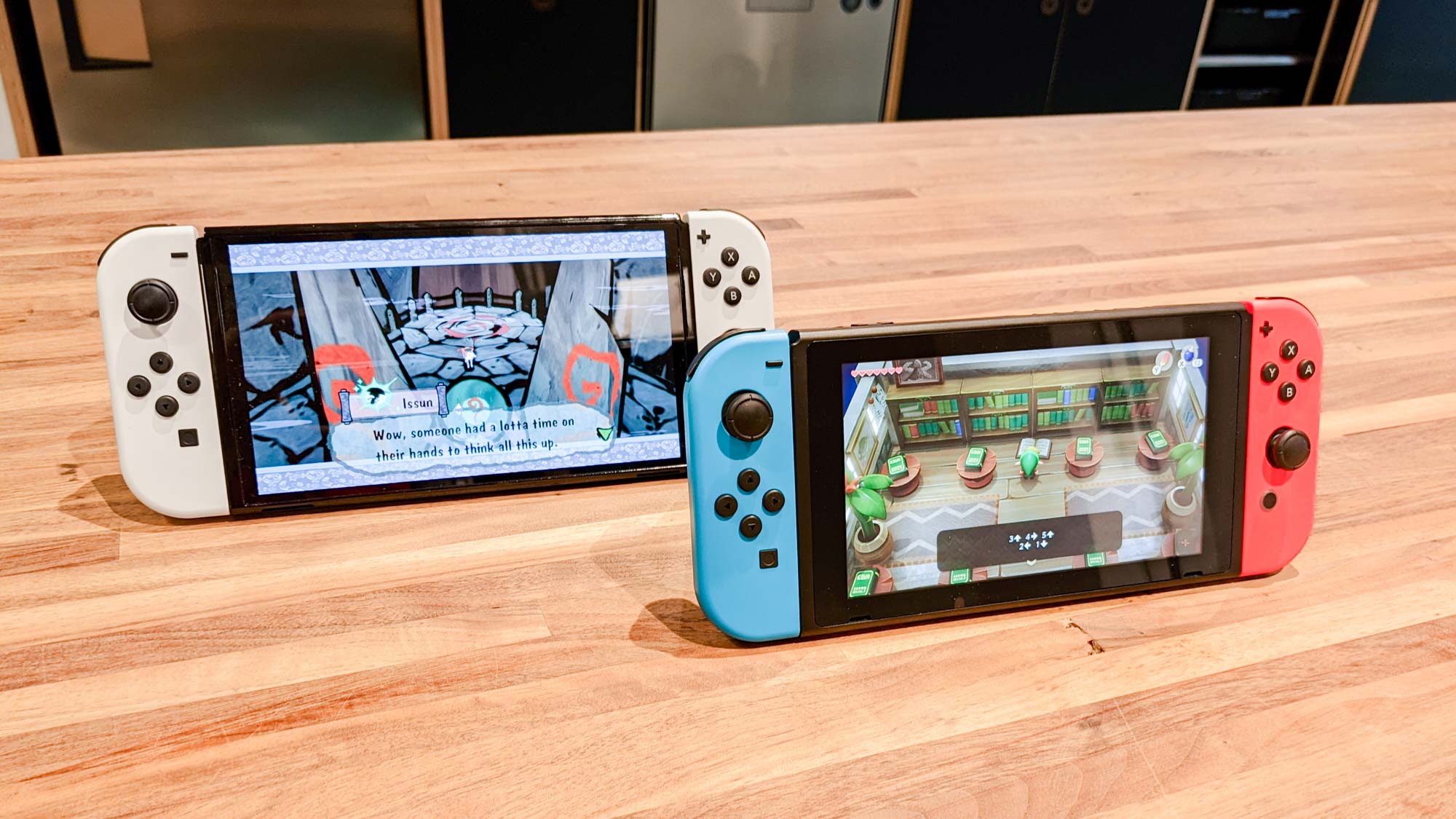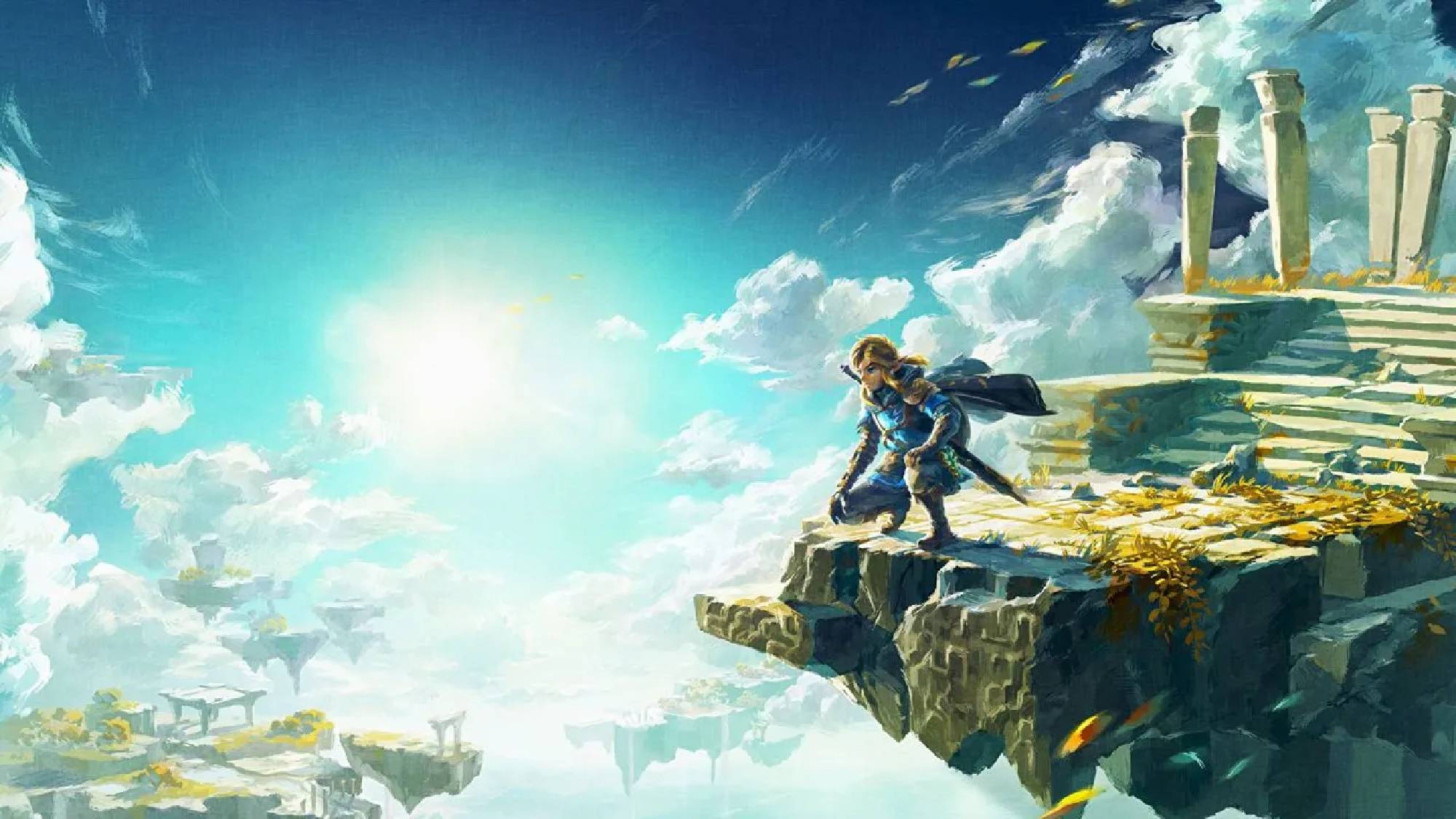It’s too late for a Nintendo Switch Pro — bring on the Switch 2
It’s too late in the Nintendo Switch’s life cycle for a piecemeal Switch Pro upgrade

For years, we’ve heard rumors about a Nintendo Switch Pro — a mid-life-cycle refresh for Nintendo’s aging console. This device would supposedly address some of the Nintendo Switch’s technical shortcomings, although the exact details vary depending on the rumormonger in question. Would the Switch Pro ditch the handheld mode for a full 4K experience, or keep the same design with a 1080p screen? Would the console add an SSD, or fix the Joy-Cons, or improve the battery life?
I maintain that none of this speculation matters, for two important reasons:
1) Nintendo has been adamant that it is not working on a Switch Pro
2) It’s far too late for a Switch Pro, anyway
The first point is pretty self-evident. Nintendo has had plenty of opportunities to play coy, or subtly hint that a mid-cycle Switch refresh might be in the works. Instead, the company has flatly denied the Switch Pro’s existence at every opportunity. Granted, it pays to be a little skeptical when it comes to corporate statements. But after a certain point, refusing to take a reputable company’s repeated, unambiguous statements at face value is just wishful thinking.
The second point bears some more analysis. At this point, a theoretical Switch Pro would have to address so many outdated features that it makes more sense to just focus on a whole new console. And given both Nintendo’s history and the timetable involved, a whole new console may be just what the company has in mind.
What the Switch needs to fix

Before we argue that a Switch Pro would be inadequate to solve the Switch’s problems, we need to zero in on what, precisely, such a console would be. Generally speaking, the rumors about a Switch Pro have pointed to a mid-life-cycle upgrade of the Nintendo Switch, rather than a completely original product. (A full-fledged Switch successor would be a “Switch 2,” for the purposes of this piece; the term is a little muddier elsewhere online.)
The purpose of a Switch Pro would not be to replace the base Switch wholesale, but to make a new version with enough power to tide players over until the next full console generation. Consider the PS4 Pro and the Xbox One X as close counterparts. These consoles weren’t full successors to the PS4 and Xbox One; they were stopgap measures, intended to let early 4K TV adopters take full advantage of their hardware. The game libraries were identical to those of the base consoles, and even the performance differences were not night-and-day.
Such an upgrade for the Switch isn’t without merit, at least in a vacuum. The lack of 4K output has been a sticking point for the Switch ever since the console’s launch, and the “mild 4K upgrade” approach worked for both Sony and Microsoft. However, the console landscape looks quite a bit different today than it did in 2016 and 2017, when the PS4 Pro and Xbox One X launched, respectively.
Consider what the PS5 and Xbox Series X offer: full 4K resolution, 120 frames-per-second frame rates, HDR support, rapid loading times via SSD, 3D audio and robust backwards compatibility. These features would not have been possible with a piecemeal upgrade; they required whole new consoles.
Now, consider what the base model Switch has to work with: 720p to 1080p resolution, 60 fps frame rates, lengthy loading times via flash memory and a variety of other limitations. Between outdated components, paltry storage sizes, broken Joy-Cons, limited online options, nonexistent backwards compatibility and a near-total absence of streaming media, the Switch’s shortcomings seem too profound to address with a simple update. “All of the same problems, but now in 4K” is not the most promising sales pitch.
The seven-year cycle

However, there’s another reason why it may be too late for a Switch Pro: Nintendo is probably already hard at work on a true Switch successor. In the past, Nintendo has operated on a “new console every five-to-seven years” schedule, and that time is rapidly approaching. While the Big N could always try something different this time around, it’s worth remembering that of the three major console manufacturers, Nintendo is the only one that was founded in the 19th century. You can’t fault the company for playing a little conservatively.
Nintendo has released seven home video game consoles for the worldwide market. Pay close attention to the release years:
- Nintendo Entertainment System (1983)
- Super Nintendo (1990)
- Nintendo 64 (1996)
- Nintendo GameCube (2001)
- Nintendo Wii (2006)
- Nintendo Wii U (2012)
- Nintendo Switch (2017)
Each one of these consoles is a complete replacement for what came before it, not a piecemeal upgrade. And each one of them came out between five and seven years after its predecessor. We are now five years past the Switch’s launch date, and we know for a fact that Nintendo has no plans for new hardware until at least partway through 2023.
While most Nintendo consoles have had refreshes, they’ve tended to be of the cosmetic variety. The redesigned NES was a top-loading model; the redesigned SNES had a smaller profile. There was the Wii Mini, and we saw countless variations of the Game Boy, DS and 3DS. Even the Switch has had two redesigns that did absolutely nothing to change the system’s core components: the Switch Lite and the Switch OLED.
In fact, there's only one instance I can find of NIntendo doing a mid-generation refresh that changed a console's underlying hardware. The New Nintendo 3DS had more RAM than its predecessor, and allowed the system to run more demanding games than the base-model 3DS. However, only about a dozen games took advantage of this functionality.
As the old Wall Street refrain goes, "past performance is not indicative of future results." Nintendo could shock us all and come out with a Switch Pro halfway through 2023, delaying its next "big" console by another year or more. However, there's no precedent for the company to do so. It's also worth asking how many people would actually invest in one, considering how many of them have already bought the base Switch, Switch Lite and/or Switch OLED. It's possible that Nintendo has exhausted its supply of gung-ho consumerism for this particular console generation.
The near future

In short, I don't expect Nintendo to put out a Switch Pro, per se — but I do expect some new hardware in either 2023 or 2024. Whether this console is a Switch 2, or a completely new design, it's difficult to say. Of all the major console manufacturers, Nintendo very much does its own thing, and loves to frustrate consumer expectations.
The only question is what we should expect from the Switch in the interim. The system is already starting to show its age, with games such as Bayonetta 3 and Pokémon Scarlet/Violet suffering from significant performance issues.We expect that The Legend of Zelda: Tears of the Kingdom will push the system to its limits, and we have no idea what big games Nintendo has planned after that.
It would be a shame to let the Switch peter out. While the system has never been especially powerful, it's always been a reliable home for high-quality games, and it would be interesting to see how developers leverage every last ounce of power before it's time for Nintendo's next big project.
Sign up to get the BEST of Tom's Guide direct to your inbox.
Get instant access to breaking news, the hottest reviews, great deals and helpful tips.
Marshall Honorof is a senior editor for Tom's Guide, overseeing the site's coverage of gaming hardware and software. He comes from a science writing background, having studied paleomammalogy, biological anthropology, and the history of science and technology. After hours, you can find him practicing taekwondo or doing deep dives on classic sci-fi.

